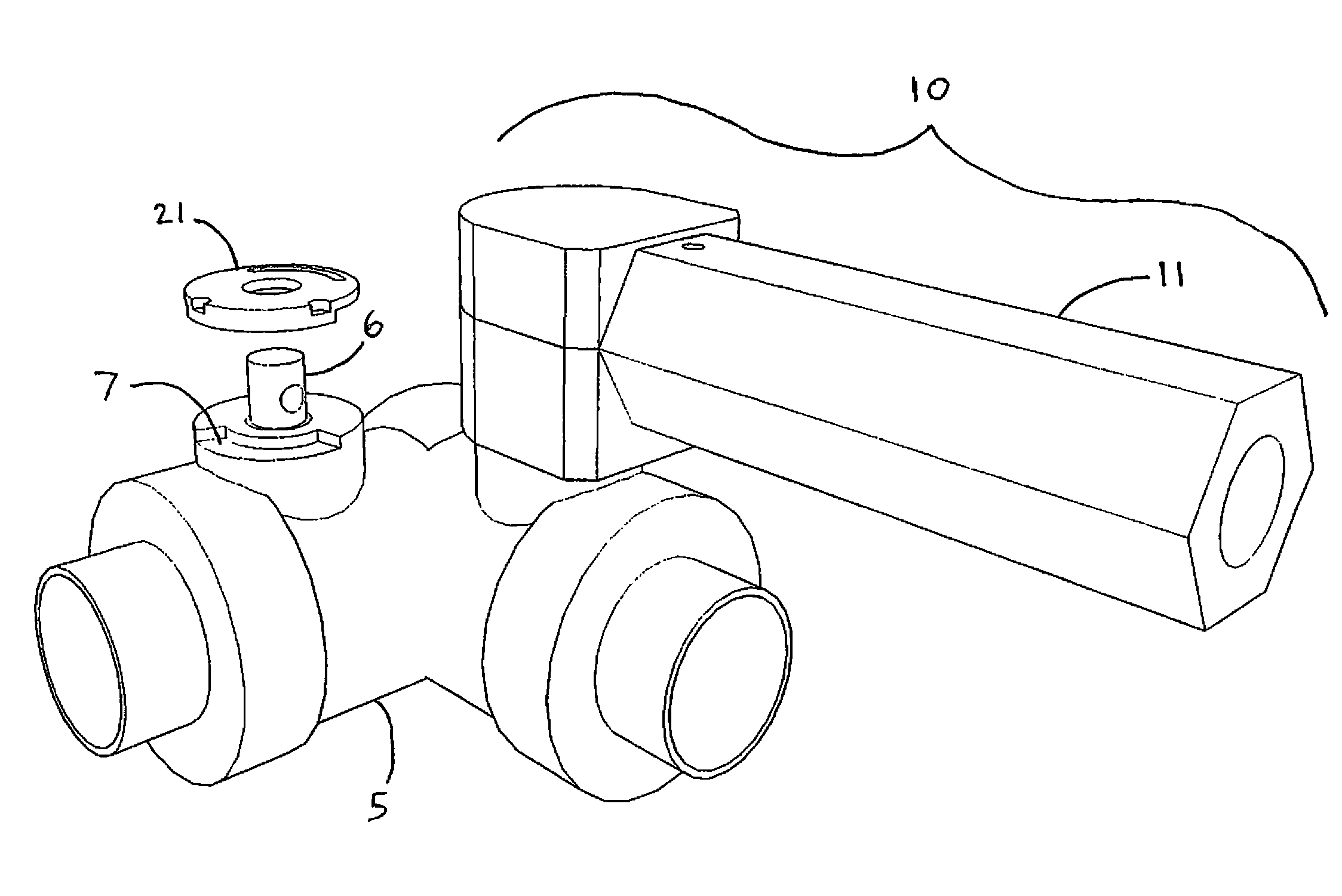Locking Y-Valve
a technology of y-valve and lock rod, which is applied in the direction of valve details, valve arrangement, thin material handling, etc., can solve the problems of difficult to make small movements with one's fingers, unnecessary water damage, and unexpected closing
- Summary
- Abstract
- Description
- Claims
- Application Information
AI Technical Summary
Benefits of technology
Problems solved by technology
Method used
Image
Examples
Embodiment Construction
[0020]Referring to FIGS. 1 and 2, a Y-valve body 5 has two branches. The water flowing through the valve body is controlled by two ball valves (not shown), one inside each branch, as known in the art. Each ball valve is attached to a valve column 6 that rotates around its axis to open and close the ball valve. The locking handle assembly 10 of the present invention is attached to the valve column 6. The assembly 10 has a handle 11 that rotates around its own axis and around the axis of the valve column 6. When the assembly 10 is installed on the Y-valve, rotating the handle 11 about the valve column's 6 axis manipulates the ball valve. In the ball valve's closed position, the handle 11 is perpendicular to its branch of the Y; in the valve's open position, the handle is parallel to its branch of the Y as shown in FIGS. 1 and 2.
[0021]FIGS. 3-6 illustrate the components of the assembly 10. In addition to the handle 11, the assembly 10 also has a housing 12 that encases substantially al...
PUM
 Login to View More
Login to View More Abstract
Description
Claims
Application Information
 Login to View More
Login to View More - R&D
- Intellectual Property
- Life Sciences
- Materials
- Tech Scout
- Unparalleled Data Quality
- Higher Quality Content
- 60% Fewer Hallucinations
Browse by: Latest US Patents, China's latest patents, Technical Efficacy Thesaurus, Application Domain, Technology Topic, Popular Technical Reports.
© 2025 PatSnap. All rights reserved.Legal|Privacy policy|Modern Slavery Act Transparency Statement|Sitemap|About US| Contact US: help@patsnap.com



